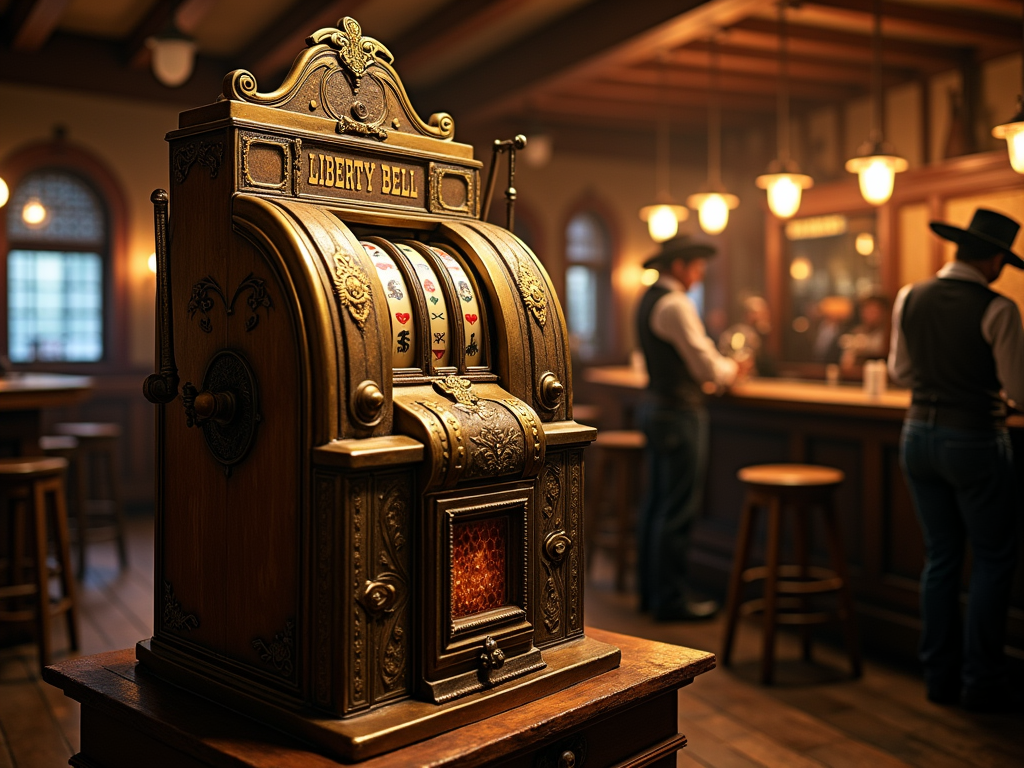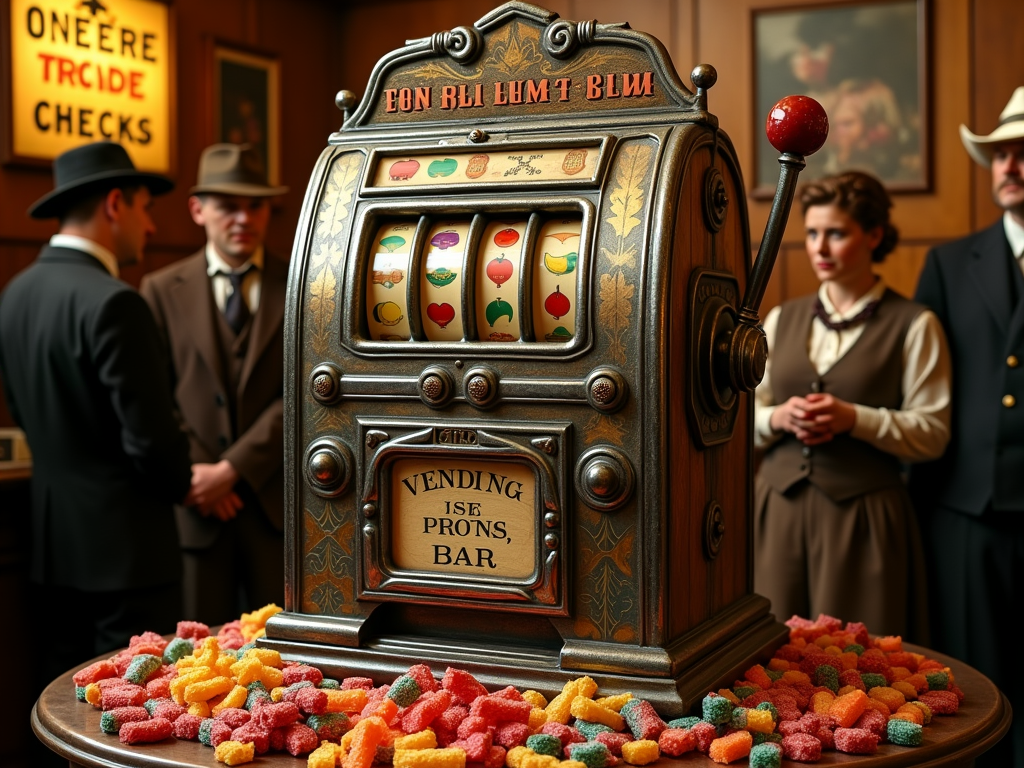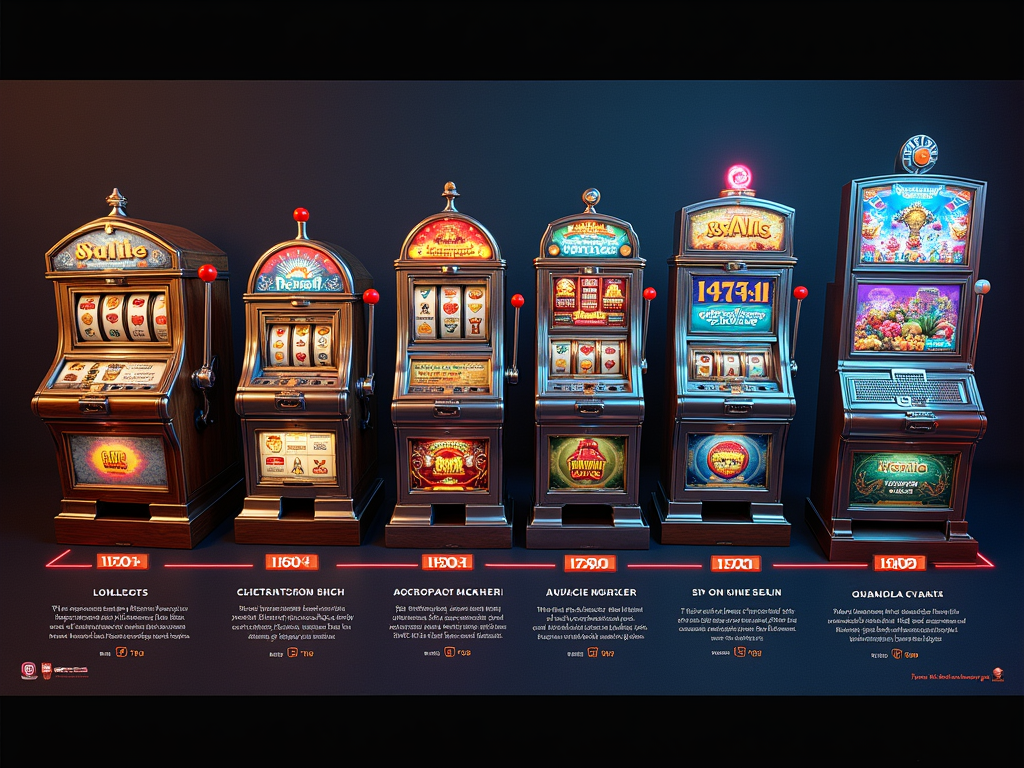The Evolution of Slot Machines: From Liberty Bell to Digital Dominance
Slot machines remain a cornerstone of both land-based and digital gambling, transforming from basic mechanical devices into advanced entertainment systems. Charles Fey’s pioneering work laid the foundation for an industry that continues to push technological boundaries and capture players’ imagination.
Key Takeaways
- The first automatic payout slot machine, the Liberty Bell, was created by Charles Fey between 1887 and 1895, establishing core gaming principles still used today.
- Fruit symbols were introduced in 1910 by Mills Novelty Company as a creative way to circumvent anti-gambling laws.
- The 1960s marked the transition to electromechanical slots, with Bally’s Money Honey being the first successful electronic slot machine.
- The introduction of video slots in 1976 and Random Number Generators (RNGs) changed the industry by enabling more complex games and ensuring fair play.
- Modern digital slots now generate over 70% of online casino revenue, featuring advanced graphics, multiple paylines, and mobile optimization.
The Shift from Mechanical to Digital
The transformation from mechanical to digital has created unprecedented opportunities for game developers and players alike. Each technological advancement brings new features, enhanced graphics, and improved gameplay mechanics. Mobile technology has made slots accessible to a broader audience, while sophisticated RNG systems maintain game integrity.
Technology Driving Player Engagement
This rich history showcases how innovation drives the gambling industry forward. Modern slots blend cutting-edge technology with engaging entertainment, creating experiences that resonate with both casual players and dedicated enthusiasts. Digital platforms have expanded the reach of slot games while preserving their essential appeal.
From One-Armed Bandit to Mechanical Marvel
The birth of slot machines marked a turning point in gambling history, starting with the groundbreaking creation by Sittman and Pitt in 1891. Their poker-based machine, while innovative for its time, required players to collect prizes at the bar since it couldn’t automatically dispense winnings.
The Evolution of Early Slot Machines
The real breakthrough came from Charles Fey’s Liberty Bell machine, created between 1887 and 1895. This was a game-changer for slot machine mechanics and paylines, introducing the first-ever automatic payout system. Fey simplified the existing design by reducing the drums from five to three reels, making it easier to achieve winning combinations.
Let’s look at the key elements that made these early machines so appealing:
- The iconic lever design earned these machines their famous nickname ‘One-Armed Bandit‘
- Original symbols included playing card suits (Hearts, Diamonds, Spades) plus Horseshoes
- The Liberty Bell symbol became the most sought-after, offering the top prize
- Players could win up to 50 cents for hitting three Liberty Bell symbols
These mechanical marvels laid the foundation for modern slot variations we see today. The simple yet effective design of Fey’s machine proved so successful that it remained virtually unchanged for decades. The pull lever mechanism, which gave players a sense of control and anticipation, became such an integral part of the gambling experience that even today’s digital slots often feature virtual levers as a nod to their heritage.
The introduction of automatic payouts was revolutionary – no longer did players need to rely on establishment staff to receive their winnings. This self-sufficient system made the games more appealing and trustworthy to players, contributing significantly to their growing popularity.
While modern slots might seem far removed from these mechanical ancestors, they still maintain many of the core principles established by these early innovations. The three-reel format, matching symbols for wins, and the element of chance remain central to slot gaming, proving that sometimes the simplest ideas are the most enduring.

Fruits, BAR Symbols, and Legal Workarounds
The Birth of Fruit Symbols
The gambling landscape changed dramatically in 1910 when the Mills Novelty Company launched their groundbreaking ‘Operator Bell’ machine. I can’t overstate how this innovation shaped modern slot machine gameplay. The company made a clever move by introducing fruit symbols – cherries, plums, oranges, lemons, and melons – as a creative solution to dodge strict anti-gambling laws.
The iconic BAR symbol, which you’ll still find in many classic slot games today, has an interesting origin story. It came from the Bell-Fruit Gum Company’s logo, adding another layer to the slot machine’s disguise as a legitimate vending device.
Creative Legal Solutions
Herbert Mills proved himself as a mastermind in finding legal loopholes. His strategy was brilliantly simple – instead of paying out cash, the machines started dispensing gum and candy as prizes. This subtle shift let them operate as vending machines rather than gambling devices, keeping them on the right side of the law.
Here’s how these machines stayed in business despite the restrictions:
- They offered fruit-flavored gum matching the symbols on the reels
- Players could claim their winnings in merchandise rather than money
- The machines displayed clear “vending device” labels
- Payouts were advertised as “trade checks” instead of cash prizes
These creative solutions laid the foundation for modern slot gaming entertainment, influencing how slots developed from simple mechanical devices into today’s digital platforms. The fruit symbols weren’t just a legal workaround – they became lasting icons in slot machine culture, recognizable symbols that still appear in countless games today.

The Electronic Evolution
The 1960s marked a revolutionary shift in slot machine technology with Bally’s groundbreaking invention. Their ‘Money Honey’ release in 1963 changed how players interacted with slot machines, introducing the first successful electromechanical model that could deliver automatic payouts up to 500 coins through its bottomless hopper system.
The Rise of Video Slots
A major breakthrough came in 1976 when Fortune Coin Co. created something completely new – the first video slot machine. Using a 19-inch Sony Trinitron display, this innovation paved the way for the modern video slots we play today. The digital display replaced physical reels, opening up endless possibilities for game designers to create unique symbols and bonus features.
Digital Innovation and RNG Technology
The introduction of Random Number Generators (RNGs) during this period transformed slot machines from mechanical devices into sophisticated gaming systems. This technology ensures that each spin is completely random and fair, making it impossible to predict or manipulate outcomes. The impact of RNGs can still be seen in modern online slot mechanics.
The acquisition of Fortune Coin Co. by IGT in 1978 set the stage for massive growth in video slot technology. IGT’s resources and distribution network helped spread these new electronic machines across casinos worldwide. This move proved crucial in establishing video slots as the preferred format for both manufacturers and players, leading to the exciting digital slots experience we know today.
This electronic evolution didn’t just change how slots looked – it revolutionized their core functionality. The shift from mechanical to electronic systems brought several key improvements:
- Larger jackpots became possible through more sophisticated payout systems
- Multiple paylines could be added without mechanical limitations
- Bonus features and special symbols could be programmed into the games
- More reliable operation with fewer mechanical parts to maintain
- Better tracking of player activity and machine performance
These innovations laid the foundation for today’s advanced slot machines, setting standards for fairness, entertainment, and technical reliability that continue to shape the industry.
Digital Revolution and Online Gaming
The Birth of Online Slots
The digital age brought a complete transformation to slot machines, pushing them far beyond their mechanical origins. I’ve watched the industry evolve from physical machines to digital experiences that players can enjoy from anywhere. The milestone moment came in 1994 when Microgaming created the first online casino software, setting the stage for what would become a multi-billion dollar industry. Two years later, InterCasino made history by processing the first real-money wager online, opening the door to digital slot gaming that offered real cash prizes.
Growth and Market Impact
The rise of digital slots has been nothing short of extraordinary. Online slot games now dominate the virtual casino landscape, making up 70% of online casino revenue. By 2022, the global online gambling market hit an impressive USD 63.53 billion, showing just how far we’ve come from those first digital spins.
The future looks even brighter for digital gaming. Market analysis shows the industry is set to grow at an 11.7% compound annual growth rate (CAGR) from 2023 to 2030. This rapid expansion has led to an explosion of creativity in slot game varieties and features, including:
- Advanced graphics and animations that rival modern video games
- Interactive bonus rounds and mini-games within slots
- Mobile-optimized games for on-the-go playing
- Live dealer integration and social features
- Virtual and augmented reality slot experiences
This digital revolution hasn’t just changed how we play slots – it’s created an entirely new gaming culture. Players can now switch between hundreds of different games in seconds, track their statistics, and participate in global progressive jackpots that would’ve been impossible with mechanical machines.

The Modern Slot Experience
Advanced Graphics and Gaming Features
Today’s slots have transformed into stunning visual experiences with HD and 4K graphics that pull you right into the action. I’ve noticed how game developers have pushed creative boundaries by partnering with entertainment giants to bring you slots based on your favorite movies and TV shows. These aren’t your grandfather’s fruit machines – they’re full-fledged entertainment centers.
The introduction of innovative mechanics like Megaways has completely changed how I look at winning combinations in slot games. With over 100,000 possible ways to win, each spin brings fresh excitement and possibilities.
Technology Driving Innovation
Mobile gaming has taken center stage in the evolution of online slots, now making up 60-70% of all gameplay. This shift has pushed developers to create games that shine on smaller screens while maintaining their visual appeal.
Progressive jackpots have become the crown jewels of online gaming. Games like Mega Moolah and Mega Fortune regularly create millionaires, offering life-changing winning opportunities. Here’s what’s shaping the future of slots:
- Virtual Reality (VR) integration creating immersive 3D casino environments
- Augmented Reality (AR) features blending digital elements with real-world surroundings
- AI-powered personalization adapting game features to individual playing styles
- Interactive bonus rounds offering skill-based elements
- Social gaming features allowing players to share achievements
These technological advances aren’t just fancy additions – they’re creating deeper, more engaging experiences that keep players coming back for more. The combination of cutting-edge technology with traditional slot mechanics has produced games that appeal to both new players and experienced enthusiasts alike.
Sources:
Fey, Marshall. “Slot Machines: A Pictorial History of the First 100 Years.”
Legato, Frank. “Encyclopedia of Slot Machines.”
Casino.org. “The History of Slot Machines.”
Grand View Research. “Online Gambling Market Size, Share & Trends Analysis Report.”
Wikipedia contributors. “Slot machine.” Wikipedia, The Free Encyclopedia.





